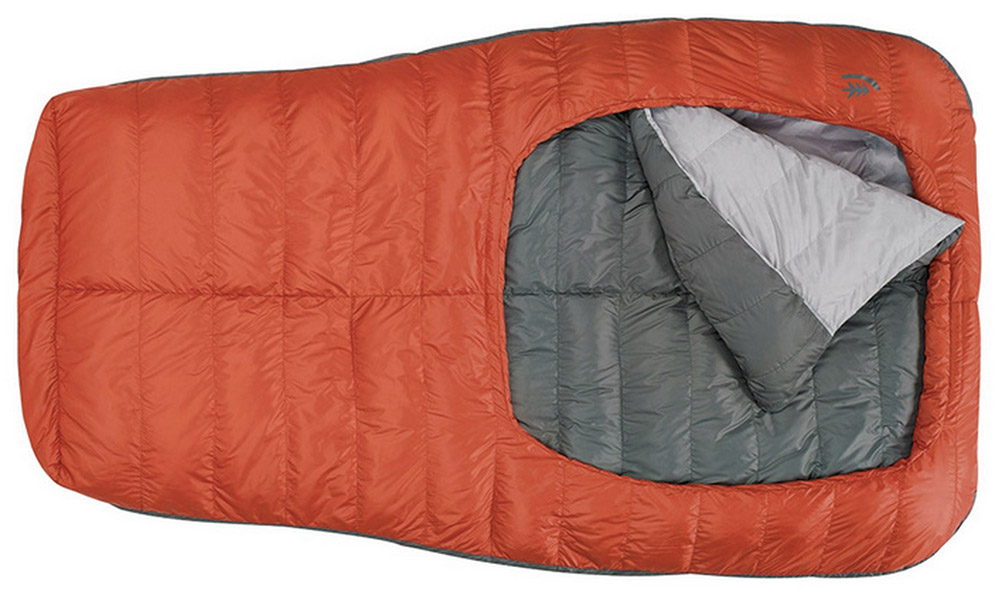By all standards, my proposal was pretty ridiculous: Spend 5 days on a sheet of ice, tethered together with a 30-meter rope, and spend each night together in ONE sleeping bag to maximize warmth.

We would suffer nights in a tent the size of a card table, and we’d spoon for warmth under a single quilt. Thus are the sacrifices one pays to stay fast and light.
To pinch on space and capitalize on body heat, I proposed that we share Sierra Designs’ Backcountry Bed Duo on our ski trip around Rainier. (See my full trip report, “High Orbit On Rainier.“)
Ditch The Sleeping Bag
Groundbreaking in its design, and loved by users and reviewers alike, the original Backcountry Bed strikes a balance between comfort and warmth. Could the Duo cut it on the mountain?
In my original text to propose the “one bag” concept I wrote, “You carry the tent, I’ll carry the bag.” My climbing partner’s response: ?













